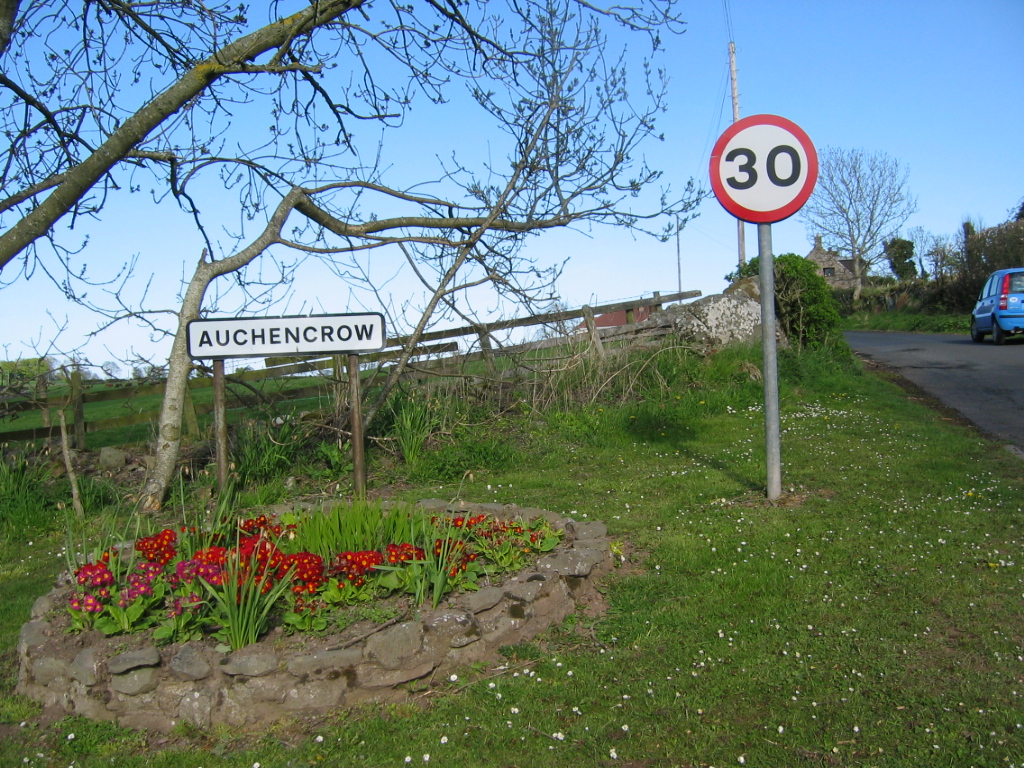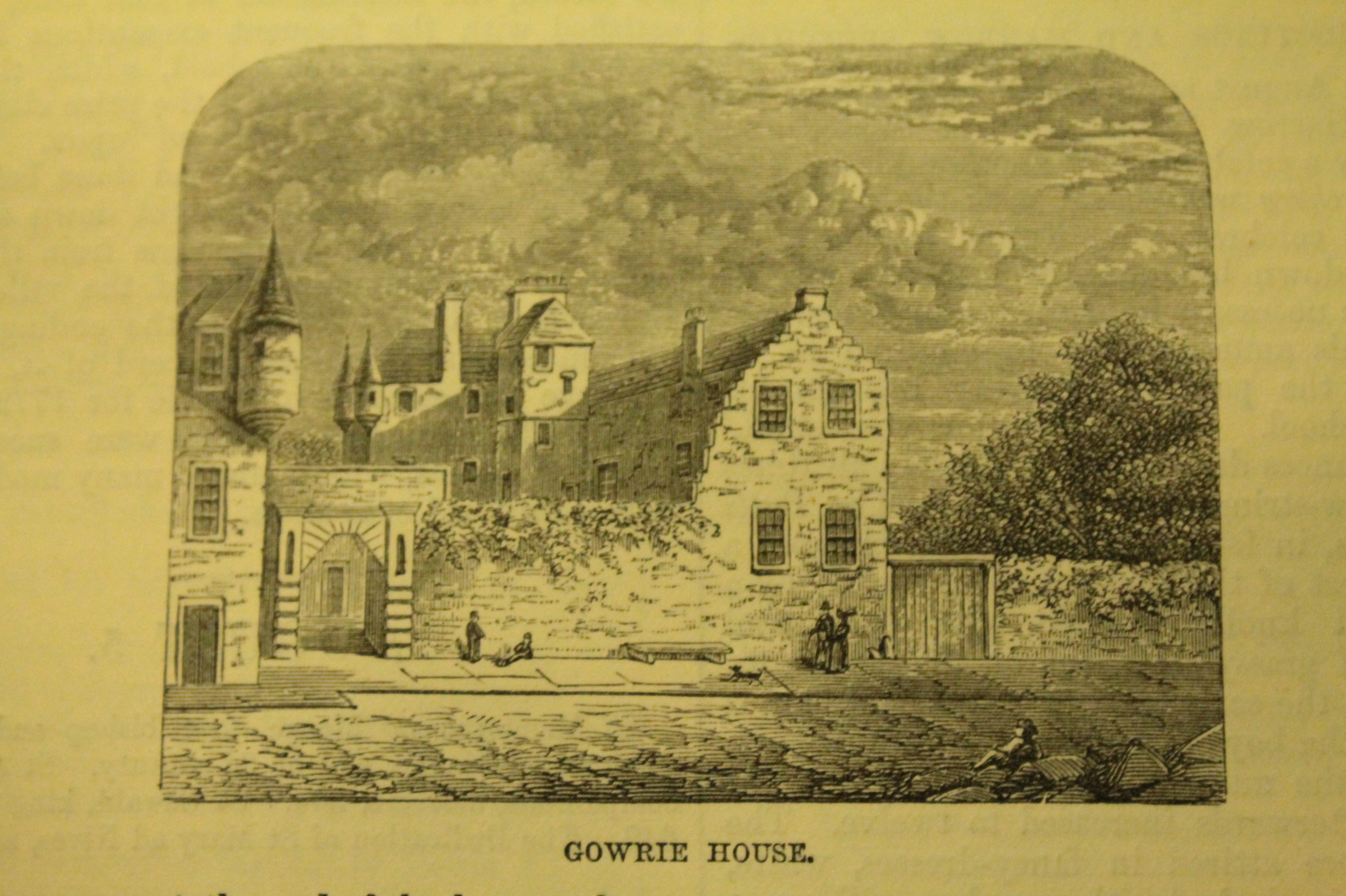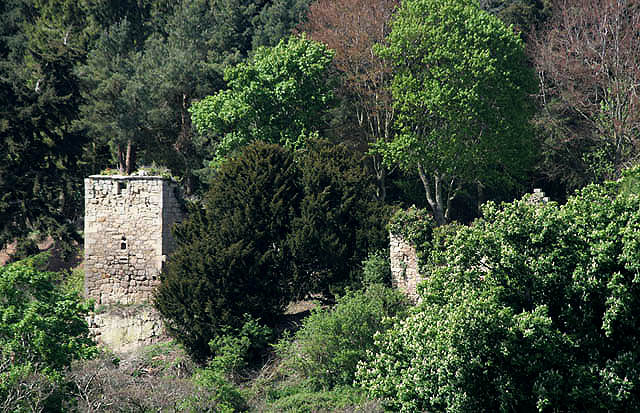|
Auchencrow
Auchencrow ( gd, Allt na Crà) is a small village in the Scottish Borders area of Scotland, by the Lammermuir range of hills, and near Reston. Etymology Around 1210, the village was referred to as Aldenegraue. It had become Aldencraw by the end of the 13th century, then Adincraw by the start of the 17th century, Auchincraw by 1771, and Auchencrow by 1860. The modern name, Auchencrow, tends to obscure the question of origins. A Gaelic origin is accepted by Watson (1926, 138) and Nicholaisen (1976, 138). It is thought that the meaning is "achadh na crà", or "field of the tree or trees". This is apparently contradicted by the 12th-century name-form ‘Alden-’, also preserved, for example, in four 13th-century Durham charters. Mac an Tàilleir suggests the form ''Aldenacraw'' may be derived from a name for the watercourse (such as the Gaelic ''Allt na Crà'', "stream of the salmon trap") rather than the settlement itself. Something like ‘Halden’s Grave’ or ‘Halden’s ... [...More Info...] [...Related Items...] OR: [Wikipedia] [Google] [Baidu] |
Berwickshire
Berwickshire ( gd, Siorrachd Bhearaig) is a historic county, registration county and lieutenancy area in south-eastern Scotland, on the English border. Berwickshire County Council existed from 1890 until 1975, when the area became part of the Borders region, with most of the historic county becoming part of the lower-tier Berwickshire district. Berwickshire district was abolished in 1996, when all the districts in the Borders region merged to become the Scottish Borders council area. The county takes its name from Berwick-upon-Tweed, its original county town, which was part of Scotland at the time of the county's formation in the twelfth century, but became part of England in 1482 after several centuries of swapping back and forth between the two kingdoms. After the loss of Berwick, Duns and Greenlaw both served as county town at different periods. The low-lying part of Berwickshire between the Tweed and the Lammermuirs is known as "the Merse", from an old Scots word for a ... [...More Info...] [...Related Items...] OR: [Wikipedia] [Google] [Baidu] |
List Of Places In The Scottish Borders
''Map of places in the Scottish Borders compiled from this list'':See the list of places in Scotland for places in other counties. This list of places in the Scottish Borders includes towns, villages, hamlets, castles, golf courses, historic houses, hillforts, lighthouses, nature reserves, reservoirs, rivers, and other places of interest in the Scottish Borders council area of Scotland. A * Abbey Mill * Abbey St. Bathans *Abbotsford Ferry railway station, Abbotsford House *Abbotrule *Addinston * Aikwood Tower *Ale Water *Alemoor Loch *Allanbank * Allanshaugh * Allanshaws * Allanton *Ancrum, Ancrum Old Parish Church *Anglo-Scottish Border * Appletreehall *Ashiestiel *Ashkirk * Auchencrow * Ayton, Ayton Castle, Ayton Parish Church, Ayton railway station B *Baddinsgill, Baddinsgill Reservoir *Bairnkine * Bassendean * Battle of Ancrum Moor * Battle of Humbleton Hill * Battle of Nesbit Moor (1355) *Battle of Nesbit Moor (1402) *Battle of Philiphaugh ... [...More Info...] [...Related Items...] OR: [Wikipedia] [Google] [Baidu] |
Robert Logan Of Restalrig
Sir Robert Logan of Restalrig (1555-July 1606) was a Scottish knight involved in the Gowrie House affair of 1600. Family background Robert Logan's father and grandfather were also called "Robert Logan of Restalrig". In 1547, his father, Robert Logan of Restalrig was first married to Margaret Seton, daughter of George Seton, 6th Lord Seton. His second wife was Agnes Gray, daughter of Patrick Gray, 4th Lord Gray. During the crisis of the Scottish reformation in 1559, this Robert Logan senior took his Leith followers to face the French troops of Henri Cleutin at Cupar Muir. Later he advised against resistance at Leith by the Protestant Lords of the Congregation against the French troops of Mary of Guise, which led to a short-lived truce by the terms of the articles of Leith. After Robert Logan senior died, his widow Agnes Gray married Alexander Home, 5th Lord Home. Her son, Robert Logan of Restalrig (d. 1606) firstly married Elizabeth Makgill, daughter of David Makgill of Cranston ... [...More Info...] [...Related Items...] OR: [Wikipedia] [Google] [Baidu] |
Burning Of Edinburgh (1544)
The Burning of Edinburgh in 1544 by an English sea-borne army was the first major action of the war of the Rough Wooing. A Scottish army observed the landing on 3 May 1544 but did not engage with the English force. The Provost of Edinburgh was compelled to allow the English to sack Leith and Edinburgh, and the city was burnt on 7 May. However, the Scottish artillery within Edinburgh Castle harassed the English forces, who had neither the time nor the resources to besiege the Castle. The English fleet sailed away loaded with captured goods, and with two ships that had belonged to James V of Scotland. The plan Henry VIII of England wished to unite the Kingdom of Scotland with the Kingdom of England, or at least bring the kingdom under his hegemony. He had contracted with the Regent Arran that Mary, Queen of Scots would marry his son, Prince Edward. But Arran allowed the Parliament of Scotland to revoke this agreement prompting Henry to declare war in December 1543, and now th ... [...More Info...] [...Related Items...] OR: [Wikipedia] [Google] [Baidu] |
Scottish Borders
The Scottish Borders ( sco, the Mairches, 'the Marches'; gd, Crìochan na h-Alba) is one of 32 council areas of Scotland. It borders the City of Edinburgh, Dumfries and Galloway, East Lothian, Midlothian, South Lanarkshire, West Lothian and, to the south-west, south and east, the English counties of Cumbria and Northumberland. The administrative centre of the area is Newtown St Boswells. The term Scottish Borders, or normally just "the Borders", is also used to designate the areas of southern Scotland and northern England that bound the Anglo-Scottish border. Geography The Scottish Borders are in the eastern part of the Southern Uplands. The region is hilly and largely rural, with the River Tweed flowing west to east through it. The highest hill in the region is Broad Law in the Manor Hills. In the east of the region, the area that borders the River Tweed is flat and is known as 'The Merse'. The Tweed and its tributaries drain the entire region with the river flowi ... [...More Info...] [...Related Items...] OR: [Wikipedia] [Google] [Baidu] |
List Of Places In Scotland
This list of places in Scotland is a complete collection of lists of places in Scotland. *List of burghs in Scotland *List of census localities in Scotland *List of islands of Scotland **List of Shetland islands **List of Orkney islands **List of Inner Hebrides ** List of Outer Hebrides **List of outlying islands of Scotland ** List of freshwater islands in Scotland *List of rivers of Scotland *List of lochs in Scotland *Waterfalls of Scotland *List of Munros * Extreme points of Scotland Lists of places within Scottish local authorities *List of places in Aberdeen *List of places in Aberdeenshire *List of places in Angus *List of places in Argyll and Bute *List of places in Clackmannanshire *List of places in Dumfries and Galloway *List of places in Dundee *List of places in East Ayrshire *List of places in East Dunbartonshire *List of places in East Lothian *List of places in East Renfrewshire * List of places in na h-Eileanan Siar (Western Isles) *List of places in Falkirk (cou ... [...More Info...] [...Related Items...] OR: [Wikipedia] [Google] [Baidu] |
Gowrie Conspiracy
John Ruthven, 3rd Earl of Gowrie (c. 1577 – 5 August 1600), was a Scottish nobleman who died in mysterious circumstances, referred to as the "Gowrie Conspiracy", in which he and/or his brother Alexander were attempting to kill or kidnap King James VI of Scotland for unknown purposes. The king's retinue killed both brothers during the attack, and the king survived. Early life John Ruthven was the second son of William Ruthven, 1st Earl of Gowrie, and his wife Dorothea Stewart. His brother James, the 2nd Earl, died in 1586, therefore John succeeded his brother as the Earl of Gowrie while still a child. The Ruthven family had a history of treason. Like his father and grandfather before him, Ruthven attached himself to the party of the reforming preachers, who procured his election in 1592 as Provost of Perth, a post that was almost hereditary in the Ruthven family. He was educated at the grammar school of Perth and the University of Edinburgh, where he was in the summer of 15 ... [...More Info...] [...Related Items...] OR: [Wikipedia] [Google] [Baidu] |
Fast Castle
Fast Castle is the ruined remains of a coastal fortress in Berwickshire, south-east Scotland, in the Scottish Borders. It lies north west of the village of Coldingham, and just outside the St Abb's Head National Nature Reserve, run by the National Trust for Scotland. The site is protected as a Scheduled Ancient Monument. The castle Fast Castle, in its heyday, comprised a courtyard and keep, built on a narrow sloping plateau, , on an eponymous promontory overlooking the North Sea. Cliffs up to high on either side rendered the castle relatively impregnable. The plateau was surrounded by a curtain wall with towers, with the keep at the northern extremity of the promontory. The castle could only be reached by a drawbridge over a narrow ravine, protected by a barbican. Little remains today of the keep or the courtyard walls except foundations, and a section of the north-east wall. The layout of the castle is very similar to that of Dunnottar Castle in Aberdeenshire, though Fast Cas ... [...More Info...] [...Related Items...] OR: [Wikipedia] [Google] [Baidu] |
David I Of Scotland
David I or Dauíd mac Maíl Choluim (Modern: ''Daibhidh I mac haoilChaluim''; – 24 May 1153) was a 12th-century ruler who was Prince of the Cumbrians from 1113 to 1124 and later King of Scotland from 1124 to 1153. The youngest son of Malcolm III and Margaret of Wessex, David spent most of his childhood in Scotland, but was exiled to England temporarily in 1093. Perhaps after 1100, he became a dependent at the court of King Henry I. There he was influenced by the Anglo-French culture of the court. When David's brother Alexander I died in 1124, David chose, with the backing of Henry I, to take the Kingdom of Scotland (Alba) for himself. He was forced to engage in warfare against his rival and nephew, Máel Coluim mac Alaxandair. Subduing the latter seems to have taken David ten years, a struggle that involved the destruction of Óengus, Mormaer of Moray. David's victory allowed expansion of control over more distant regions theoretically part of his Kingdom. After the death of ... [...More Info...] [...Related Items...] OR: [Wikipedia] [Google] [Baidu] |
Blanerne Castle
Blanerne Castle is the remains of a 16th-century fortified house, located in the grounds of Blanerne House, an 18th-century country house between Chirnside and Preston in the Scottish Borders. The house and castle sit on the north bank of the Whiteadder Water, around north-east of Duns. The castle was the historical seat of the Lumsdaine family for over four centuries. The surviving remains are dated to the 16th century, although the site may have been occupied as far back as the 12th century. The remains include a keep or kitchen block, with a detached guard house to the west. The castle is protected as a Scheduled Ancient Monument. A popular Berwickshire rhyme refers to the medieval strengths of Blanerne and the nearby fortresses of Billie Castle, and Bonkyll Castle referring to their construction in the time of David I and their destruction following the Rough wooing: ''Bunkle, Billie and Blanerne ''Three castles strong as airn'' ''Built when Davie was a Bairn'' ''Theyll ... [...More Info...] [...Related Items...] OR: [Wikipedia] [Google] [Baidu] |
Bonkyll Castle
Bonkyll Castle (also variously spelled Bonkyl, Boncle, Buncle, Bunkle or Bonkill) was a medieval fortress situated in the historic Scottish county of Berwickshire, from 1973 the Scottish Borders. It is situated 4 miles north of Duns and 4 miles south of Grantshouse. Few traces survive and the site is protected as a scheduled monument. It was the seat of a junior branch of the Stewart family, known as "Stewart of Bonkyl", from which was descended in another junior branch "Stewart of Darnley", the paternal family of King James I & VI of Scotland and England. Description Excepting the motte on which it stood, and a small section of curtain wall there is little left of the structure of what was once a very powerful castle of enceinte. Descent de Bonkyll The seat of the powerful barony of Bonkyll, the castle originally belonged to the de Bonkyll family, which took its name. Their canting arms were ''three buckles''. The last in the male line was Sir Alexander de Bonkyll, whose da ... [...More Info...] [...Related Items...] OR: [Wikipedia] [Google] [Baidu] |
Candlemas Day (Scotland)
Scottish term and quarter days mark the four divisions (terms and quarters) of the legal year in Scotland. These were historically used as the days when contracts and leases would begin and end, servants would be hired or dismissed, and rent, interest on loans, and ministers' stipends would become due. Description The Term Days are Whitsunday and Martinmas, and together with Candlemas and Lammas they constitute the Quarter Days. These originally occurred on Christian holy days, corresponding roughly to old quarter days used in both Scotland and Ireland, with White Sunday or Whitsun occurring at the Easter Pentecost and thus moving around. These were mapped from the Julian to the Gregorian calendar and fixed in 1886 as 28 February, 28 May, 28 August and 28 November, and then later ratified by the Term and Quarter Days (Scotland) Act 1990. Pre-1886 The Old Scottish Term and Quarter Days (Julian to Gregorian): *Candlemas (2 February) *Whitsunday (15 May) *Lammas (1 August) *Mart ... [...More Info...] [...Related Items...] OR: [Wikipedia] [Google] [Baidu] |







